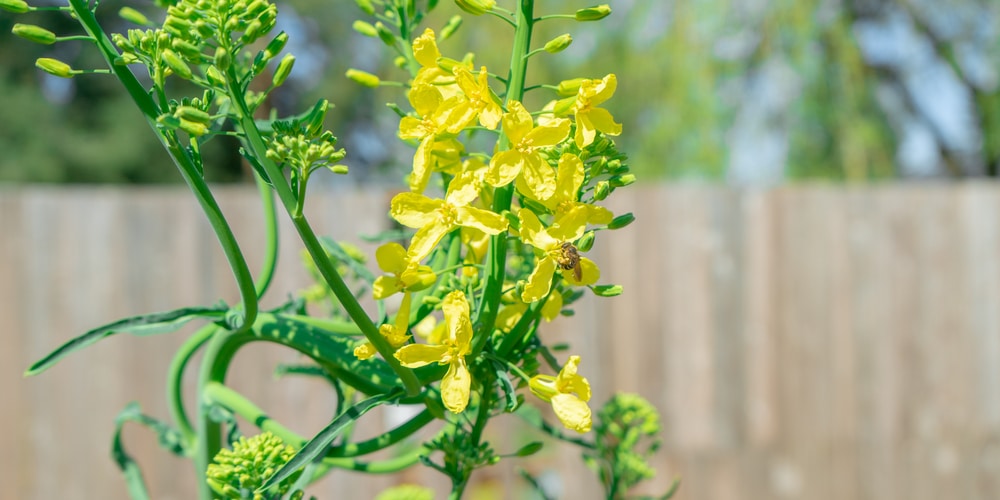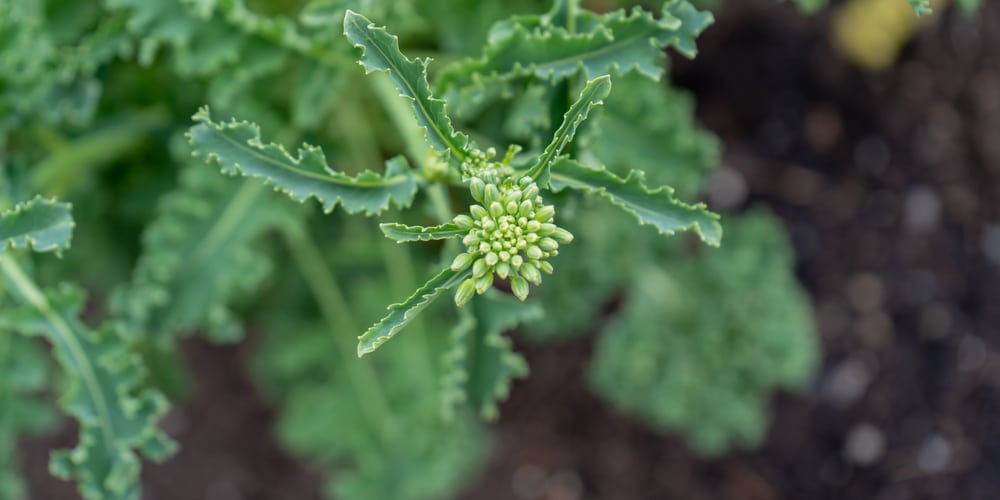Kale is a powerhouse of a vegetable. It’s packed with antioxidants, vitamins, and minerals, and it’s been shown to have anti-inflammatory properties. Eating kale may help to reduce the risk of some chronic diseases, such as cancer.
Despite its many health benefits, kale can be a difficult vegetable to grow. One of the biggest challenges is preventing it from bolting or premature flowering. When kale bolts prematurely, its leaves become tough and bitter. The plant also becomes less productive.
If you’re new to growing kale, you may be wondering why it bolts and how to keep it from bolting. Here’s what you need to know about kale bolting and some tips for avoiding premature flowering.
Why Does Kale Bolt?

In vegetables, premature flowering is usually the result of stress. The plant may be responding to too much or too little water, extreme temperatures, or damage from pests. Kale is particularly sensitive to changes in temperature. A sudden drop in temperature can trigger bolting, as can a prolonged period of warm weather.
Here are some factors that may contribute to kale bolting:
Over-Fertilization
Too much of everything can be bad, and that’s certainly the case with fertilizer. Over-fertilizing kale can lead to rapid growth, making the plant more susceptible to bolting. Nitrogen is the nutrient that’s most likely to cause problems.
If you’re using a fertilizer with high nitrogen content, be sure to follow the directions carefully. Applying too much can damage the plant and encourage bolting.
The best way to avoid over-fertilizing is to have your soil tested. This will give you an idea of which nutrients are lacking and how much fertilizer to apply. Kale needs fertilization every four to six weeks during the growing season.
Inadequate or Too Much Water
Kale is a thirsty plant, and it needs about an inch of water per week. If the soil is too dry, the plant will start to bolt. Conversely, if the soil is too wet, the roots may rot. This can also lead to bolting. Kale bolts during these two extreme watering conditions because the plant is under stress.
To avoid these problems, water kale deeply and regularly. Check the soil before watering to make sure it’s dry. If possible, use a soaker hose or drip irrigation to deliver water directly to the roots.
Temperature Fluctuations
As we mentioned, temperature fluctuations can cause kale to bolt. Sudden changes in temperature, either hot or cold, can stress the plant and trigger bolting. Kale is a cool-weather crop, so it’s particularly sensitive to warm weather.
Getting the timing right is crucial to preventing bolting. If you’re growing kale in spring, be sure to plant it early enough so that it matures before the weather gets too hot. In summer, look for varieties that are resistant to bolting.
Pest Damage
Caterpillars, aphids, and other pests can damage kale leaves, making the plant more susceptible to bolting. These pests not only cause physical damage to the leaves but also introduce stress to the plant.
To avoid pest damage, start with clean seedlings and inspect them regularly for signs of pests. Treat infestations promptly with an organic pesticide or insecticide.
Poor Drainage
If there’s one thing kale hates, it’s wet feet. The plant needs well-drained soil to thrive. If the soil is too wet, the roots may rot, and as a result – yes, it’ll bolt. Using peat moss or compost to improve drainage can help.
You can also take steps to avoid waterlogged soil. Be sure to plant kale in raised beds or on hillsides. And don’t forget to check the drainage before planting.
How to Keep Kale from Bolting
Unfortunately, if you’ve noticed that your kale plant is prematurely bolting, at this point, there’s nothing you can do to stop the process. The best thing you can do at this point is to snip off the flower stalks and hope that the plant produces more leaves.
There are ways, however, you can do to prevent this from happening during the next growing season. Here are some tips:
Start Early
One of the best ways to avoid bolting is to start kale plants early in the season. This gives the plant time to mature before the weather gets too hot. As you know by now, kale likes to flower when the weather gets warm.
If you live in an area with a short growing season, start the plants indoors about six to eight weeks before the last frost date. Transplant them outdoors when the weather warms up.
Plant in the Shade
Kale is a cool-weather crop, so it prefers cooler temperatures. One way to keep the plant from bolting is to plant it in an area that gets partial shade. This will help to keep the soil cool and moist.
Mulch
Your goal is to ensure that the roots stay cool and moist. One way to do this is to mulch around the plants. This will help to keep the soil temperature down and prevent evaporation.
There are a variety of materials you can use for mulching. Grass clippings, bark chips, and straw are all good options.
Maintain a Regular Watering Schedule
When kale becomes deprived of water, it will start to bolt. This is why it’s important to maintain a regular watering schedule. The plant needs about an inch of water per week.
If possible, use a soaker hose or drip irrigation to deliver water directly to the roots. This will help to avoid any problems with root rot.
Monitor the Temperature
At this point, temperature fluctuations are ways beyond your control. However, you can monitor the temperature and take steps to protect the plants if there’s a sudden drop or rise in temperature.
For example, if you know a cold snap is coming, you can cover the plants with a row cover or frost cloth. This will help to keep them from getting too cold. If it starts to get too warm, you can provide some shade with a tarp or piece of fabric.
Bolting Kale: Final Thoughts
Homegrown kale is a delicious and nutritious addition to any diet. If you have this vegetable planted in your garden, sooner or later, you’ll notice it bolting.
This is a natural process that happens when the plant produces flowers and goes to seed. If reproduction is the plant’s goal, bolting is a good thing. But if you’re hoping to harvest kale leaves, it’s not so great.
There are steps you can take to prevent premature bolting. These include starting the plants early, planting in the shade, and maintaining a regular watering schedule.
Related article: Do Deer Eat Kale?

